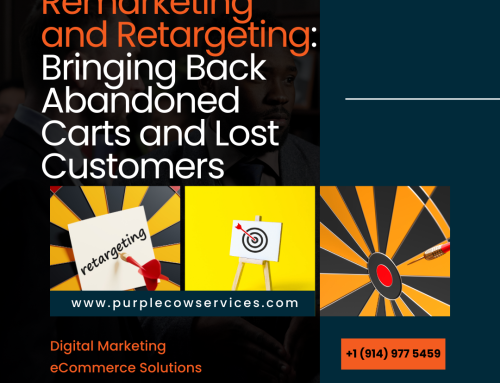Upselling and cross-selling are two powerful tactics that can significantly increase revenue for eCommerce businesses. They are often used interchangeably, but they are not the same thing. Upselling refers to the practice of offering customers a more expensive or advanced version of a product they are already interested in purchasing.
Share This Story, Choose Your Platform!
Cross-selling, on the other hand, involves suggesting additional products or services that complement the original purchase.
Both tactics can be incredibly effective when used correctly, but they require a delicate touch. Pushing customers too hard can backfire and damage their trust in your brand. That’s why it’s essential to approach upselling and cross-selling in a strategic and thoughtful way. In this blog, we’ll provide you with 31 examples of how other eCommerce businesses have successfully implemented upselling and cross-selling strategies.
Amazon – Frequently Bought Together
Amazon is a master of eCommerce, and they have some of the most sophisticated upselling and cross-selling techniques in the business. One of their most effective strategies is their “Frequently Bought Together” section, which suggests additional products that are often purchased with the original item.
Best Buy – Recommended Accessories
Best Buy’s upselling strategy is similar to Amazon’s, but they take it a step further by offering “Recommended Accessories.” For example, if a customer is purchasing a new camera, Best Buy might suggest additional lenses, a case, or a tripod to enhance their experience.
Zappos – Related Products
Zappos is known for its excellent customer service, and they extend that same level of service to their upselling and cross-selling strategies. When a customer is browsing for shoes, for example, Zappos will suggest related products that might interest them, such as socks, insoles, or shoe care products.
Sephora – Upsell to a Set
Sephora is a beauty brand that specializes in high-end cosmetics and skincare products. They use upselling to encourage customers to purchase sets of products rather than individual items. For example, they might offer a set of three lipsticks at a slightly higher price than one lipstick to incentivize customers to buy more.
Dollar Shave Club – Upgrade Membership
Dollar Shave Club provides subscription-based service. It delivers razors and other grooming products to its customers on a regular basis. They use upselling to encourage customers to upgrade their membership to receive more products or higher-quality items.
Netflix – Upgrade Plan
Netflix is a streaming service that offers various subscription plans with different features. They use upselling to encourage customers to upgrade their plan to get access to additional content or higher quality video streaming.
Spotify – Family Plan
Spotify is a music streaming service that offers a Family Plan for multiple users. They use upselling to encourage individual users to upgrade to the Family Plan to share the service with their family members and friends.
Target – Cartwheel App
Target is a retail giant that has developed its own mobile app, the Cartwheel App. They use cross-selling to suggest additional products to customers based on their purchase history, browsing behavior, and location.
Uber – UberEATS
Uber is a ride-sharing service that has expanded into food delivery with UberEATS. They use cross-selling to suggest additional services to customers who have used their ride-sharing service, such as food delivery or bike-sharing.
Airbnb – Recommended Experiences
Airbnb is a platform that connects travelers with local hosts who rent out their homes or apartments. They use cross-selling to suggest additional experiences to customers, such as guided tours, cooking classes, or other activities in the area.
Harry’s – Post-Shave Balm
Harry’s is a men’s grooming brand that uses cross selling to suggest additional products to complement their customers’ purchases. For example, when a customer purchases a razor, Harry’s might suggest a post-shave balm to soothe and moisturize their skin.
Lululemon – Outfit Builder
Lululemon is a fitness apparel brand that uses cross-selling to suggest complete outfits to customers. They offer an “Outfit Builder” tool on their website that allows customers to mix and match different pieces to create a cohesive workout ensemble.
Crate & Barrel – Room Builder
Crate & Barrel is a home furnishings brand that uses cross-selling to suggest complementary products for customers’ purchases. They offer a “Room Builder” tool on their website that allows customers to design a complete room with furniture, decor, and accessories.
Williams-Sonoma – Recipe Suggestions
Williams-Sonoma is a kitchenware and gourmet food brand that uses cross-selling to suggest recipe ideas to customers. For example, if a customer purchases a new cookware item, Williams-Sonoma might suggest a recipe that utilizes that item, along with additional ingredients and tools needed to prepare the dish.
Apple – AppleCare+
Apple is a technology brand that uses upselling to encourage customers to purchase additional warranties and service plans. For example, when a customer purchases a new iPhone or MacBook, Apple might suggest adding on AppleCare+ for extended coverage and support.
Glossier – Add-Ons
Glossier is a beauty brand that uses cross-selling to suggest add-ons to customers’ purchases. For example, when a customer purchases a skincare product, Glossier might suggest a complementary makeup item to complete their look.
Petco – Repeat Delivery
Petco is a pet supply retailer that uses upselling to encourage customers to sign up for Repeat Delivery, a subscription service that delivers pet food and supplies on a regular basis. They offer a discount on the first delivery to incentivize customers to try the service.
Wayfair – Room Planner
Wayfair is a home decor and furniture retailer that uses cross-selling to suggest complementary products to customers’ purchases. They offer a “Room Planner” tool on their website that allows customers to design a complete room with furniture, decor, and accessories.
Adidas – Personalized Recommendations
Adidas is a sportswear brand that uses cross-selling to suggest personalized recommendations to customers. They offer a “Personalized Recommendations” tool on their website that takes into account customers’ browsing history and purchase behavior to suggest products that might interest them.
Stitch Fix – Style Quiz
Stitch Fix is a subscription-based styling service that delivers personalized clothing and accessories to customers based on their style preferences. They use upselling to encourage customers to upgrade their membership to receive more items or higher-quality pieces.
The Home Depot – Project Ideas
The Home Depot is a home improvement retailer that uses cross-selling to suggest project ideas to customers. For example, if a customer is browsing for paint, The Home Depot might suggest a complete paint and decorating project, along with additional supplies and tools needed to complete the project.
Nordstrom – Personal Stylist
Nordstrom is a high-end fashion retailer that offers a Personal Stylist service to customers. They use upselling to encourage customers to sign up for the service, which offers personalized recommendations and styling advice.
Etsy – Recommended Products
Etsy is a marketplace for handmade and vintage items that uses cross-selling to suggest recommended products to customers. They offer personalized recommendations based on customers’ browsing and purchase history, along with related items that might interest them.
Warby Parker – Virtual Try-On
Warby Parker is an eyewear brand that uses technology to enhance the customer experience. They offer a “Virtual Try-On” tool on their website, which uses augmented reality to allow customers to try on different frames before making a purchase. They use cross-selling to suggest complementary products, such as eyeglass cases and cleaning cloths.
Blue Apron – Wine Pairings
Blue Apron is a meal kit delivery service that uses cross-selling to suggest wine pairings for their recipes. When a customer orders a meal kit, Blue Apron might suggest a wine that complements the flavors of the dish, along with information about the vineyard and tasting notes.
Saks Fifth Avenue – Personal Stylist
Saks Fifth Avenue is a luxury department store that uses personalization to enhance the customer experience. They offer a personal stylist service, where a dedicated stylist will work with the customer to curate a wardrobe that suits their personal style and preferences. They use upselling to encourage customers to purchase additional items, such as shoes or accessories, to complete their look.
CVS – ExtraBucks Rewards
CVS is a pharmacy and health products retailer that uses upselling to incentivize customers to spend more. They offer a rewards program called ExtraBucks, where customers earn points for their purchases that can be redeemed for discounts on future purchases.
Starbucks – Upsize
Starbucks is a coffee chain that uses upselling to encourage customers to purchase larger sizes of their drinks. They offer a “Upsize” option, where customers can get a larger size of their drink for a discounted price.
Bath & Body Works – Bundle Deals
Bath & Body Works is a beauty and fragrance retailer that uses upselling to encourage customers to purchase bundles of products. For example, they might offer a “Buy 2, Get 1 Free” deal on body wash, lotion, and body spray to incentivize customers to purchase multiple items at once.
HelloFresh – Add Extras
HelloFresh is a meal kit delivery service that uses cross-selling to suggest additional products to customers. When a customer orders a meal kit, HelloFresh might suggest adding extras such as a kitchen tool or a dessert to complete the meal experience.
Walmart – Rollbacks
Walmart is a retail giant that uses upselling to offer discounts on larger purchases. They offer “Rollbacks,” which are temporary price reductions on certain products or categories. For example, they might offer a discount on a pack of six paper towel rolls, encouraging customers to stock up.
Conclusion
These are just a few examples of how eCommerce businesses use upselling and cross-selling to increase revenue. As you can see, there are many different ways to approach these tactics. The most effective strategy will depend on your specific business and target audience. Develop a targeted and personalized approach to upselling and cross-selling by understanding your customers’ needs and preferences. This will benefit both your business and your customers.
Looking to stand out from the herd? Look no further than Purple Cow, the ultimate upselling and cross-selling strategy guide. We help you create a unique and memorable customer experience that keeps them coming back for more. Don’t settle for blending in – let Purple Cow help you differentiate yourself from the competition and achieve success like never before. Try our services today!
Share This Story, Choose Your Platform!
In This Blog:

















